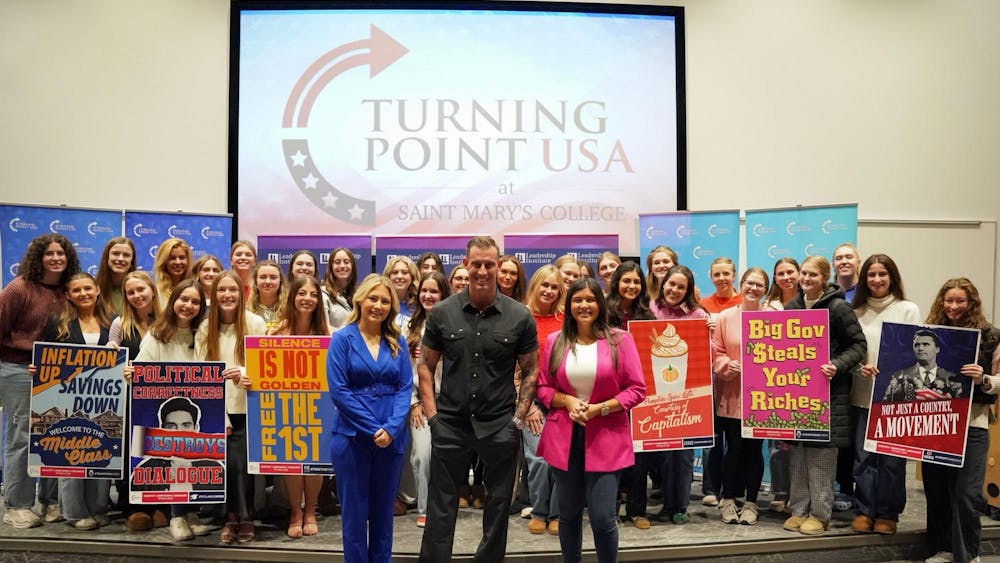When Fr. Sorin arrived in Indiana in 1842, his small group encountered the cold, snowy winter that anyone who has lived in South Bend is all too familiar with. As he surveyed the land, he saw what we now know as St. Mary’s and St. Joseph’s lakes. Only, Fr. Sorin saw one lake, and named the University accordingly: Notre Dame du lac, “Our Lady of the Lake.” This is the story we may have learned in our Moreau class.However, there is another story of our University’s inception, perhaps as obscure but just as real as the second frozen lake which Fr. Sorin could not distinguish. The Pokagon band of the Potawatomi had resided on this land since at least the 1600s, living self-sufficiently and practicing Catholicism since French explorer Robert Cavelier de La Salle first arrived in the area. In fact, at the behest of Leopold Pokagon, a Catholic priest was sent to the region; this priest was Fr. Stephen Theodore Badin. The Pokagon’s strong ties to the Catholic Church compelled Fr. Badin to argue on behalf of the Potawatomi, who would otherwise have been removed in the “Trail of Death” in the 1840s. And so, when Fr. Sorin arrived, he found allies, wisdom regarding the use of the land and resources in the area and inspiration in a devout Catholicism in the Native community living on the land which we now call home. A thriving Pokagon community welcomed, inspired and sustained the priests, helping to build the University in its early stages and setting it on the way to the thriving, world-renowned institution that exists today. Many members of the Notre Dame community can tell you the first version of this story. But few know the second. This incomplete account of our own history is part of the reason a greater effort must be made by the current Notre Dame community to learn more about Native communities and acknowledge Native voices. Notre Dame recognizes that “the intellectual interchange essential to a university requires, and is enriched by, the presence and voices of diverse scholars and students” in its mission statement. The University encourages students to learn about their own multifaceted identities and engage with the local community and beyond, beginning in their Moreau class their first year. The University empowers students to share their own voices and learn from those of their classmates and community. Yet the Native voice is one that is historically and consistently absent. While Native voices have been largely under-represented, there are many Notre Dame students who recognize this fact and seek to engage them. There are approximately 100 students each semester in classes which address Native history and culture. Events such as a “Potawatomi Language and Culture” night and multidisciplinary conferences have high student attendance and interest, and there is a growing number of students doing service in Indian country through the Center for Social Concerns and Alliance for Catholic Education. However, due to a pervasive lack of education about Native American culture and history in all levels of education, many students simply do not realize what they do not know. This, as well as a general lack of Native voices in important national discussions, means the number of students engaging with Native culture at Notre Dame is much lower than it should be.The importance of Native American inclusion is why these issues should be addressed in the Moreau First Year Experience curriculum. As all students are required to take this course, this will be a good first step in educating the student body. Inclusion of Native voices is furthermore consistent with Notre Dame’s mission statement and Catholic identity, as well as Moreau course objectives. To further this end, we have presented a resolution to the student Senate requesting their support of a more inclusive Moreau curriculum.Expansion of education about Native history and culture should not stop there. In seeking a more diverse and inclusive community, we should continue to encourage everyone to share their own unique background and narrative. By learning about the experiences and cultures of others, we will learn more about ourselves and help Notre Dame, and our society as a whole, be the best that it can be, enriched by all of its members. Now that you know a more accurate story of Notre Dame’s origins, we urge you to consider Native communities and voices more broadly, in not only Notre Dame’s history, but academia and social issues. Considering Native voices has the capacity to enrich dialogue and knowledge at all levels, carry the wisdom to bring many communities together and allow for a more vibrant understanding of the past, present and future of society. If you are interested in learning more, sharing your story, or helping with the movement for more awareness of Native issues, please reach out. We acknowledge our presence on the traditional homeland of the Pokégnek Bodéwadmik/Pokagon Potawatomi, who have been using this land for education for thousands of years and continue to do so.
Anna Scartz
senior
Lauren Klein
junior
Apr. 27









